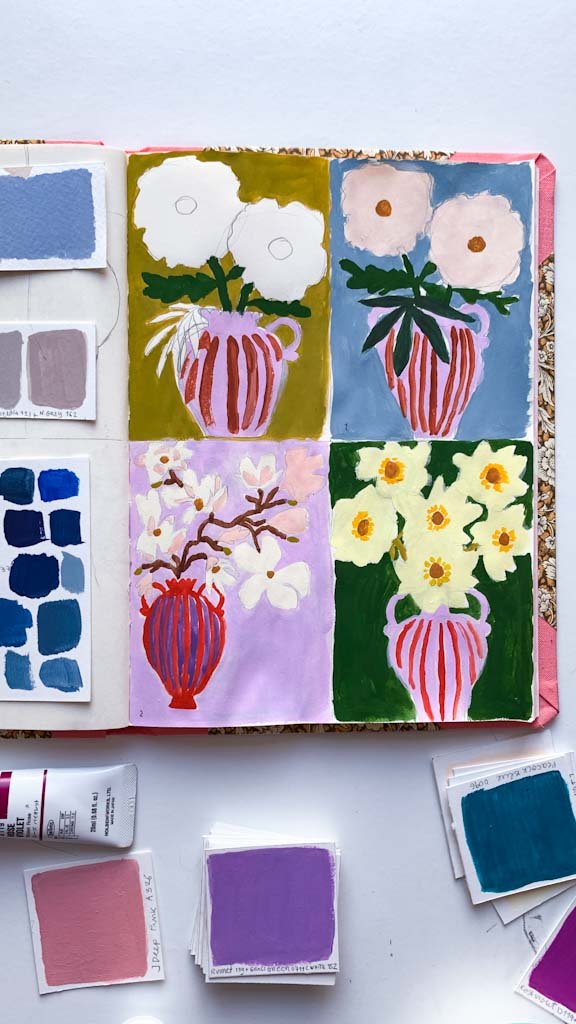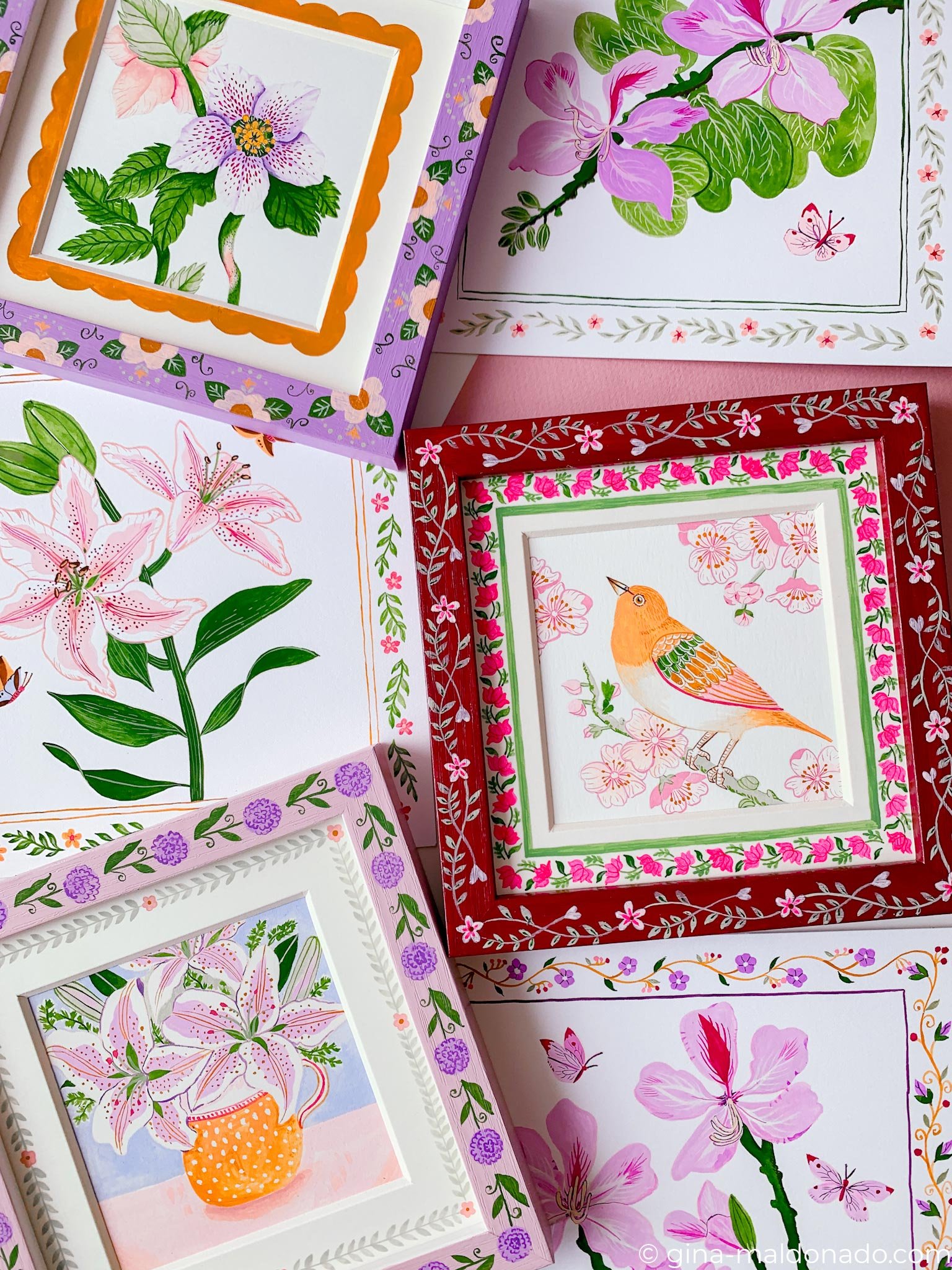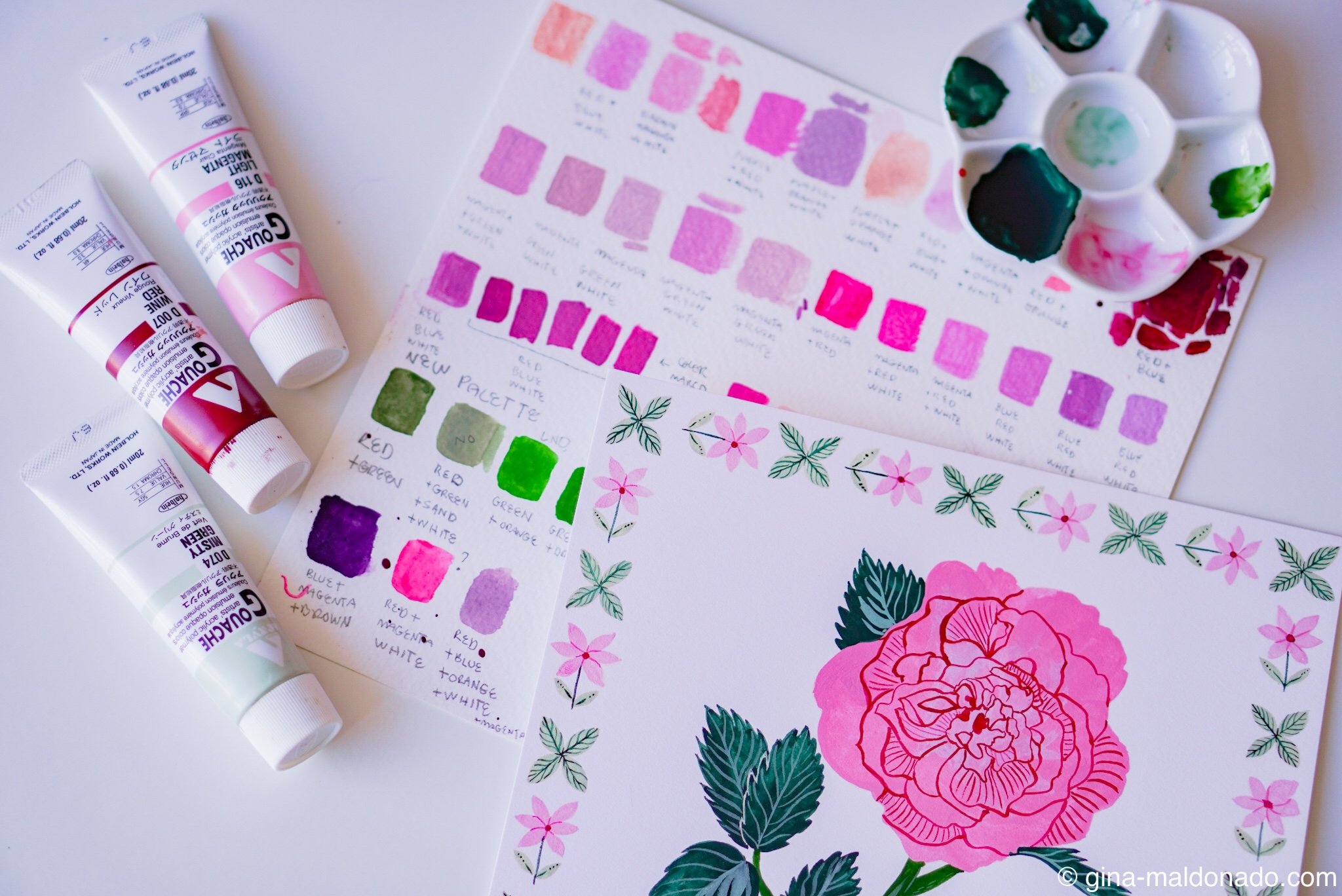How do you develop an idea for a painting?
Inspiration for paintings can strike at any moment. The trick is to stay alert and take note of anything that catches your eye. For me, nature is always a source of inspiration. Whether I'm out for a walk in my local park or travelling around the world, I find myself stopping often to admire the flowers, insects, and birds. I'm constantly fascinated by the shapes, textures, and colours around me, and I'll snap photos or make notes on my phone to help me capture the moment.
In the end, inspiration can come from anywhere. It's all about being open to it, and then taking that spark of inspiration and working with it, sketching it, and bringing it to life with paint. The beauty is that you never know when inspiration will strike, but when it does, it's magic.
✦ Inspiration: Where to find ideas for paintings
Inspiration is all around us. Everyone has things that speak to them and draw them in. For me, taking photos of nature while walking through my neighbourhood is one of the ways I gather inspiration. I also spend time browsing Pinterest and Instagram for images of floral bouquets and wildlife photography. Visiting museums is another great source of inspiration - seeing the diverse interpretations of a theme can really spark my creativity. I can be a bit messy with my inspiration photos - I’ve got thousands on my phone-, but they're handy when I'm sketching. To help keep myself focused and organised, I create mood boards to guide my subject matter and colour palette when I'm working on a collection.
✦ Sketching: How to turn an idea into a rough draft
When something catches my eye, I like to really study it and figure out how to translate it into a drawing. Lately, I've been fascinated with drawing cats - their markings are so interesting, but their eyes are a real challenge to get just right. I've been practicing drawing cats from different angles, trying to capture the subtle nuances of their markings and expressions. I also love drawing flowers and leaves - the variety of shapes and textures is endless. I find that when you draw flowers from different perspectives and include folds in the leaves and imperfections in the petals, it adds a sense of movement and realism to the composition.
✦ Composition: Planning the layout and elements of your painting
Once I've got a rough idea of what I want to draw, I start sketching out some thumbnails to figure out the overall composition. Then, I take tracing paper and trace the sketch onto it, allowing me to refine and add more detail. When I draw at a larger scale, I can really think about how each element works together to create balance. Sketching big allows me to see if my composition works or not - I want my paintings to have a balanced feel, with no one area drawing the eye more than the others, so you feel like you're always discovering something new.
✦ Colour palette: Choosing colours to convey mood and emotion
After I've got my sketch down, it's time to choose my colours. This is where I really get to play around - I work intuitively with colours, choosing one favourite and then adding more colours to the colour palette that will complement and balance the composition. I have a few tried-and-tested favourites, like lilac, mineral violet, and sap green. To test my colours, I'll paint little swatches in my sketchbook, or do a quick sample painting on Procreate on my iPad. Nothing too fancy - I'm just trying to see if the colours work together in harmony. If I spot any clashing colours, I can make adjustments before I dive into the actual painting.
And there you have it, from inspiration to colour selection, all wrapped up in a neat little package. Whether it's nature, social media, or a trip to the museum, inspiration can come from anywhere. For me, sketching, playing around and choosing colour palettes are the basic steps to developing an idea for a painting. Each artist has a different process and you should do what works best for you. Remember, balance, harmony, and experimentation are the keys to success.
Follow me on Instagram @ginamaldonado_














